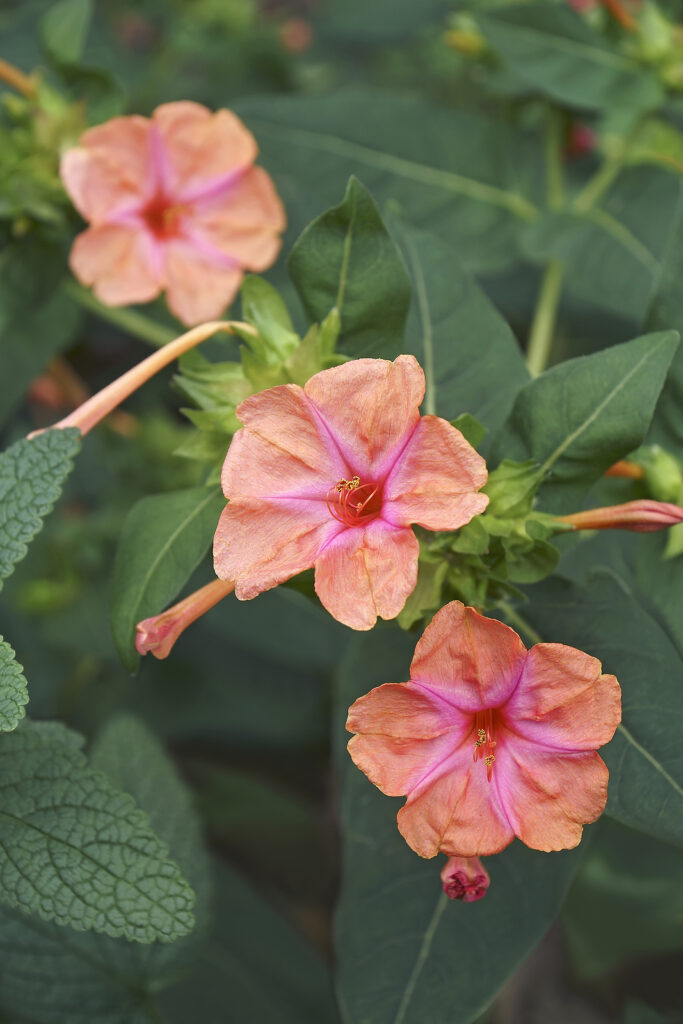Sharing is caring!
Mirabilis – commonly known as the four o’clock plant – is a perennial shrub that is sometimes grown as an annual. Fragrant red, pink, magenta, yellow or white flowers grow on panicles over a long summer period. In areas with cold winters, the four o’clock plant can be raised and stored for the winter.
Mirabilis are often called “four o’clock” flowers because their flowers usually open in the late afternoon. The flowers close the next morning and reopen in the afternoon. The flowers bloom all day on cloudy days.
Mirabilis is a genus of about 50 species of annual and bulbous perennial plants. Commonly grown in gardens are Mirabilis jalapeño Grows as a perennial in Zone 7 and warmer; it self-sows and grows as an annual in cooler areas. Mirabilis jalapa commonly known as “four o’clock” because the flower blooms in the afternoon.
Seeds of success at Amazon:

Learn about Mirabilis
- Plant type: warm-season annual; tuberous perennial in temperate climates
- Cultivation zone and range: 8-11; annual in Zones 2-6; perennial in Zones 7-11.
- Hardness: Soft in cold winter areas
- Height and width: 24 to 36 inches (61-91cm) high and wide
- Foliage: Ovate leaves on branching stems
- Flowers: Fragrant trumpet-shaped flowers, often fragrant, open in late afternoon and last until evening
- Flower color: Yellow, red, white and pink
- Bloom time: Mid summer until first frost
- Uses: Temporary mixed flower borders, hedges or shrubs; Plant near porches, patios, entryways and under windows to enjoy the fragrance
- Common Name: Four-O-Clock, Wonder of Peru
- Botanical name: Mirabilis jalapa
- Family: Family Nyctaginaceae
- Origin: Southwestern United States and Central and South America
Where to grow Mirabilis
- Grow Mirabilis in full sun, but will tolerate light shade.
- Grow Mirabilis in medium to humus-rich, well-drained soil.
Uses of Mirabilis
- Plant Mirabilis at the back of flower beds and borders.
- Mirabilis is a perennial plant grown in cottage gardens. Mirabilis blooms profusely throughout the summer.
- Note: All parts of the plant are poisonous.

When to plant Mirabilis
- Place Mirabilis in the garden in spring after all danger of frost has passed.
Planting and spacing Mirabilis
- Space Mirabilis 2 to 3 feet apart; plants look best when grouped in a dozen or more.
How to water and feed Mirabilis
- Mirabilis wants abundant moisture; keep the soil evenly moist.
- Fertilize with Mirabilis every 4 to 6 weeks or with a slow-release fertilizer in spring.
Great care
- Mulch around Mirabilis to conserve soil moisture and control weeds and seeding.
- Mulch to protect the plant during winter in Zones 6-7. In colder zones, dig up the roots and store them for replanting in spring.
Mirabilis pests and diseases
- Mirabilis is generally pest and disease free.

Mirabilis propagation
- Sow seeds indoors in early spring.
- Sow seeds in the garden after danger of frost has passed.
- Seeds germinate in 4 to 6 days at 70° to 72°F (22-23°C). The plants will be large enough to transplant in about 12 days. Flowers usually appear 8 to 10 weeks after sowing.
- Divide tubers in spring.
Varieties of Mirabilis to grow
- Mirabilis jalapeño: busy perennial with ovate leaves; fragrant flowers in bright pink, red, yellow, white and some striped. Flowers are often spotted. Flowers open in the afternoon and fade in the morning,
Frequently asked questions about Mirabilis
Q: Should I start exercising at four o’clock in the afternoon indoors or outdoors?
A: You can start four-o’clocks (botanical name Mirablis) indoors or outdoors. Indoors, start seeds 4 to 6 weeks before the frost-free date. Sow the seeds in peat pots to avoid disturbing the roots when transplanting. Place the seedlings outside as soon as possible after the last frost. Harden them off before planting outdoors. Sow seeds outdoors about a week after the last frost. For spring blooms, sow seeds in the fall.
Q: What is the best location in the garden to plant Mirabilis?
A: Mirabilis–four o’clock–prefers full sun in well-drained soil. Mirabilis can tolerate poor soil and summer heat, but it will also grow well in cool summers. The plant itself is not attractive but the flowers are. Plant Mirabilis behind plants with full foliage; This situation will benefit the flower.
Related articles:

